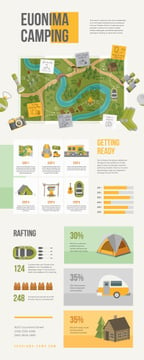While both offer staminas in different environments, it is very important to figure out which sort of insulation will certainly finest serve your needs. The insulation you choose impacts heat, weight, water resistance, compressibility and rate.
Down is gathered from waterfowl, usually ducks or geese. It is valued for its lightness, easy compression and protecting residential or commercial properties. However, down ends up being less effective when damp.
Warmth-to-Weight
A high warmth-to-weight proportion is wanted in outside clothes and equipment. The protecting homes of down feathers make them a terrific choice for this function, as they are incredibly warm and lightweight.
However, down sheds its shielding capacities when it splashes, indicating it needs to be paired with a waterproof covering. Furthermore, some individuals dislike down, making synthetic coats a much better alternative for them.
Synthetic insulations are typically made from recycled polyester and created to mimic down's protecting properties. They are not as light-weight as down, but they do not shed their shielding capabilities when they get wet and completely dry more quickly than down. They are likewise more economical than down. However, their life-span is shorter than down, leading to higher maintenance and replacement costs.
Water Resistance
The insulation you select for your job coat will make a huge difference in how comfy you feel outdoors. Nonetheless, the sort of insulation you select additionally has substantial ramifications for your sustainability goals.
Down is a superb insulator for a variety of factors. It's lightweight, compressible, and provides a good warmth-to-weight proportion. However, it does not prosper when it gets wet. Down clumps up and loses its loft when wet, which can dramatically lower its capability to catch heat.
Synthetic insulation materials, such as Thinsulate and Primaloft, hold up much better against wet conditions. They commonly have a tight weave or chemical coating that keeps water from penetrating the material. This enables the insulation to continue to be breathable, even if damp. It deserves keeping in mind that synthetics can additionally be unpleasant when wet, however they keep their protecting residential properties.
Compressibility
While goose down does have a premium warmth-to-weight ratio, artificial insulation executes in a similar way. Nevertheless, unlike down which takes in and sheds its protecting capabilities when damp, synthetic insulation does not. Therefore, it can keep its loft space and trap warm air in damp conditions.
Usually produced from polyester sheets or clusters that simulate down, one of the most typical artificial insulation brands consist of PrimaLoft, FullRange, Thermoball and Patagonia's PlumaFill. While it still can not match down's loftiness and warmth-to-weight, artificial jackets are light-weight, quick to dry and cheaper than down. This makes artificial jackets excellent for wet settings, or if you're prone to sweating heavily. Artificial jackets are also much less fragile than down and can take a beating. This durability reaches their face fabrics which are typically thicker and more sturdy than down.
Sturdiness
A significant consideration in sustainability is tent ventilation a product's long life and resilience. All-natural products like cork, ThermaCork increased cork and Havelock wool last longer than synthetic options like fiberglass and vinyl. They also need much less upkeep and can hold up against rough environmental problems.
Nevertheless, natural insulation doesn't execute also when wet as synthetic choices. Woollen and fleece glob with each other when damp, jeopardizing their capacity to trap heat. Artificial insulation, on the other hand, does not take in wetness and remains to shield also when soaked.
This makes artificial insulation perfect for damp environments and arduous tasks where you may sweat heavily. It's also less complicated to clean and dries faster than down. This included longevity and dependability make synthetic insulation a general winner in this category. This converts to long lasting insulated work boots that last lengthy and keep you warm via demanding environments.
Sustainability
All-natural products provide biodegradability and a smaller sized ecological footprint, while artificial options brag sturdiness and ingenious applications that support power efficiency. Nonetheless, it is essential to recognize real environmental effect of these insulation materials from cradle-to-grave.
As an example, if a natural insulation product has to take a trip a far away from its resource to the building site, transportation-related exhausts enhance its total carbon footprint. Picking locally sourced and reused items decreases that influence. And, choosing GREENGUARD and Cradle to Cradle qualifications makes sure that insulation is free of unstable natural compounds (VOCs) and sustains liable sourcing and labor conditions.
Sheep's wool and cork are eco-friendly insulation resources that are gathered without hurting the tree or plant. Both have the added advantage of being naturally resistant to mold and mildew, bugs and moisture.
